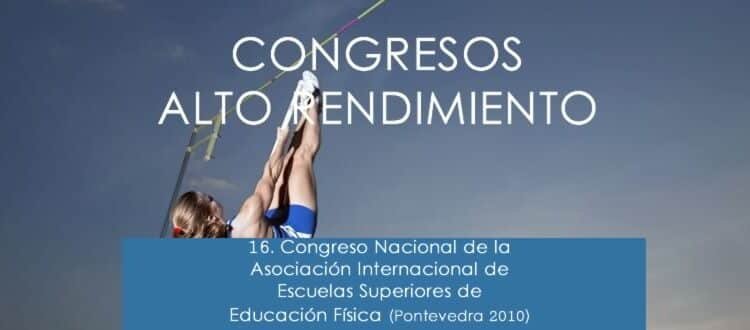Peer-assisted learning methods and pupils’ lucidity in a physical education setting
Peer-assisted learning methods and pupils’ lucidity in a physical education setting
INTRODUCTION
According to literature, the accuracy of self-efficacy (SE) appraisals emphasizing a lack of discrepancies between efficacy beliefs and performances is a key component of the construction of new behaviour patterns (Bandura, 1997; Moritz et al., 2000; Schunk, 1987). In the educational setting, this form of children’s awareness about their capability to assess their own abilities should be label lucidity. With regard to social mechanisms (i.e., instruction, observation, regulation) which govern the accuracy of such appraisals, Peer-Assisted Learning (PAL) methods need to be considered. Describing the acquisition of knowledge and skill through active helping and supporting among equal status or matched companions, PAL literature stress personal responsibility for learning and positive role interdependence (Topping & Ehly, 1998).
In physical education domain, there is an importance to give children the opportunity to help each others to evaluate precisely their motor level with regard to security conditions in learning. In a kick-boxing task that required students to coach each others, Legrain et al., (2003) demonstrated that when they were trained to endorse a tutor role, participants expressed lower but less discrepant expectancies about their performance form and outcomes than when they were untrained. Because the accuracy of self-efficacy (SE) appraisals is one of the elements of successful strategies in the first steps of learning, the purpose of this study was to examine the processes that would explain the benefits on self-efficacy related to social conditions of learning in gymnastics for 11 years old children.
METHOD
Seventy three pupils (M= 12 + 0,5) were recruited from four classes. After a pre-test (Time 0) that invited two judges to score them on gymnastic criteria and a completion of SE questionnaires, the participants were assigned to one of the following four learning condition. In the Natural Collective (NC) condition, participants were typically instructed to freely work together. In the Peer-Instructional (PI) condition, participants were asked to stress to tutees the most important elements for execution reading a worksheet and demonstrating the exercise. In the Peer-Assessment (PA) condition, participants were asked to observe attentively a peer to give corrective feedback.
In the Peer Tutoring (PT) condition, participants were asked to instruct and give peers corrective feedback. All the participants practiced gymnastics in mixed-sex groups of 4 or 5 on five specific fit-out stations according to security and progressive learning reasons during six weeks of two hours with regard to natural learning conditions. In the four learning conditions, pupils practiced the same gymnastic exercises for the same time with the same teacher. According Step by step, participants of PI, PA and PT conditions were trained to fulfil their role respectively during each lesson, making a total of 3 and a half hours for each participant. At the final stage of the experiment, participants’ level of self-efficacy beliefs and gymnastics performance on each of the three apparatus were assessed twice (Time 1 and Time 2). The accuracy of SE appraisals was also considered subtracting SE beliefs from performance.
RESULTS
On asymmetric bars performance, RM ANOVAs indicated that PT participants displayed higher scores than participants of NC, PI and PA conditions (p .001, p .05, p .05) at Time 1. The difference between PT and NC participants was also observed at Time 2 (p .05) whereas no significant diffrence emerged in comparison with PI and PA participants at this stepof measure. On the level of SE beliefs no difference was observed between the four conditions at Time 1 or 2. On the accuracy of SE appraisals at time 1, RM ANOVAs indicated that PT, PI and PA participants displayed more accurate SE appraisals than NC participants (p < .001, p .05, p .05). orrelation analyses confirmed the significant relation between level of SE beliefs and performances at the times 1 and 2.
CONCLUSION
When they are involved in observational and instructional tasks, pupils realize higher performances without expressing higher self-efficacy beliefs in gymnastics. However they demonstrate more awareness stating expectations of success. These results consistent with other studies in academics and physical education settings (Schunk, 1987; Legrain et al., 2003) confirm that observation and instruction should bring useful knowledge in learning which should be efficiently used during peer assessment, behavioural suggestions for correction, and, as a result, should favour more accurate comparisons of one’s performances to those of peers. Helping children to state with accuracy their self-efficacy appraisals seems one of the most relevant strategies the teacher can choose in order to favour the motor progress in the first step in motor learning. In gymnastics such a procedure should be considered as a way for teaching active security and social responsibility in physical education.
REFERENCES
Bandura, A. (1997). Self-efficacy: The exercise of control. New York: Freeman.
Legrain, P., Arripe-Longueville, F. (d’), & Gernigon, C. (2003). The influence of trained peer tutoring on tutors’ motivation and performance in French boxing setting. Journal of Sports Sciences, 21, 539-550.
Moritz, S. E., Feltz, D. L., Fahrbach, K. R., & Mack, D. E. (2000). The relation of self-efficacy measures to sport performance: A meta-analytic review. Research Quarterly for Exercise and Sport, 71, 280-294.
Schunk, D. H. (1995). Social origins of self-regulatory competence: The role of observational learning through peer modeling. Paper presented at the 61st Meeting of the Society for Research in Child Development. Indianapolis.
Topping, K., & Ehly, S. (1998). Peer-Assisted Learning. Mahwah: Lawrence Erlbaum Associates.






